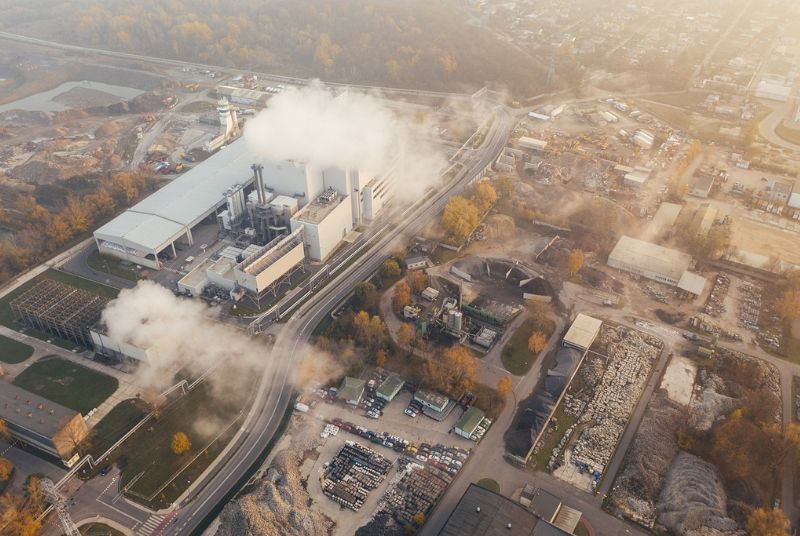Chilling Solutions: Navigating the Paradox of Air Conditioning for a Safe Future
Air Conditioning Best Practices
In an increasingly heat-stricken world, where scorching temperatures have been experienced in places like Thailand, India, Puerto Rico, and even the unexpected corners of Portland, Oregon, the reliance on air conditioning is on the rise as a primary solution. This trend is turning many places into literal hotspots, both in terms of elevated temperatures and energy consumption.
The rapid proliferation of air conditioners has reshaped urban landscapes and daily life. The case of Seattle exemplifies this shift: from being one of the least air-conditioned cities in the US, it has transitioned to having more than half of its homes equipped with cooling units. Globally, the number of AC units has surged by a staggering 267% between 1990 and 2022, with projections indicating the addition of another billion units by the end of this decade.
However, the paradox of air conditioning emerges, as its widespread usage to combat heat contributes to warming the planet. In cities, the "Urban Heat Island" effect exacerbates heat with heat-absorbing surfaces. Moreover, the refrigerants used in AC systems, particularly hydrofluorocarbons (HFCs), are potent greenhouse gases. The energy demand for running air conditioners often relies on fossil fuels, leading to around 4% of global greenhouse gas emissions attributed to AC units, a share that's poised to increase. Ironically, isn’t it?
While the health benefits of air conditioning, particularly in terms of preventing heat-related mortality, cannot be ignored, the need to employ it responsibly and sustainably becomes evident. Here are some actionable steps to maintain comfort while minimizing the environmental impact of air conditioning:
- Stay Cool Smartly: Limit outdoor exposure during peak heat times, wear breathable clothing, and stay hydrated.
- Optimal AC Size: Choose an appropriately sized AC unit to avoid excessive energy consumption and ensure effective moisture removal.
- Mitigate Heat Generation: Refrain from activities that add heat to your home while using AC, and consider isolating heat-generating rooms.
- Cool People, Not Spaces: Close doors and vents to unoccupied rooms, reducing energy usage and costs.
- Fan Benefits: Utilize fans to circulate air and create a breeze, reducing the reliance on AC units.
- Upgrade to Energy-Efficient Models: Newer AC units are more energy-efficient, with significant long-term savings potential.
- Rethink Home Design: Design homes with temperature considerations in mind, incorporating natural cooling techniques and reflective coatings.
The quest to strike a balance between personal comfort and environmental responsibility drives the need to make informed choices when it comes to cooling methods. As air conditioning continues to be an indispensable tool against extreme heat, integrating smarter practices and efficient technologies can pave the way toward a more sustainable cooling future.
Redefining Air Conditioning Technology for Sustainable Cooling
With more and more AC technologies used worldwide, there is a dual impact on climate change, both as a contributor and a consequence. The surge in demand for temperature and humidity control driven by economic growth is projected to escalate greenhouse gas emissions from air conditioners. While significant attention has been directed toward studying the energy consumption of air conditioning units, a new study conducted by the National Renewable Energy Laboratory (NREL) and Xerox PARC highlights the overlooked factor of humidity control, which accounts for nearly half of energy-related emissions.
The study unveils a complex dilemma that has persisted since the widespread adoption of air conditioners over half a century ago. Jason Woods, a senior research engineer at NREL and co-author of the study, notes that this challenge has a dual nature. On one hand, more individuals benefit from improved comfort, but on the other hand, the increased usage escalates energy consumption and subsequently raises carbon emissions.

The research findings reveal a significant breakdown of air conditioning's carbon footprint. Annually, air conditioning contributes to around 1,950 million tons of carbon dioxide emissions, which is equivalent to approximately 3.94% of global greenhouse gas emissions. Within this context, 531 million tons result from temperature control, 599 million tons from humidity removal, and the remainder from the release of refrigerants and emissions when manufacturing and transporting air conditioning equipment.
Addressing these emissions necessitates the development of novel technologies that transcend the limitations of existing systems. Woods asserts that the current vapor compression technology, which employs harmful refrigerants to cool and dehumidify air, has approached its upper bounds in terms of efficiency. The need for innovative cooling and dehumidifying approaches has become evident as attempts to enhance existing technology have reached theoretical and practical limitations.
The researchers propose an alternative route by segmenting the cooling and humidity control processes, potentially leading to efficiency improvements of over 40%. Liquid desiccant-based cooling cycles are among the emerging technologies that hold promise. NREL's ongoing development of various liquid desiccant air conditioning technologies exemplifies this approach. By fundamentally transforming humidity control, these technologies could potentially slash cooling-energy emissions by 42% by 2050. This achievement would prevent the release of 2,460 tons of carbon dioxide annually. As the global demand for air conditioning continues to grow, the imperative to devise efficient, environmentally conscious alternatives becomes increasingly urgent.
In a world where the clash between rising temperatures and environmental responsibility intensifies, the evolution of air conditioning assumes a critical role. As we navigate the ever-increasing demand for cooling solutions, we stand at a pivotal crossroads, a so-called juncture where innovation, conscientious choices, and scientific progress converge. The surge in air conditioner usage has ignited both challenges and opportunities, unveiling a paradox that demands a delicate balance between individual comfort and global sustainability. It is within this complexity that our shared journey unfolds — redefining cooling technology, embracing cutting-edge solutions, and fostering a legacy of climate consciousness. The path ahead calls for collaborative efforts, transformative initiatives, and the willingness to adopt cooler ways that safeguard not only our immediate well-being but also the health of the planet we call home.
